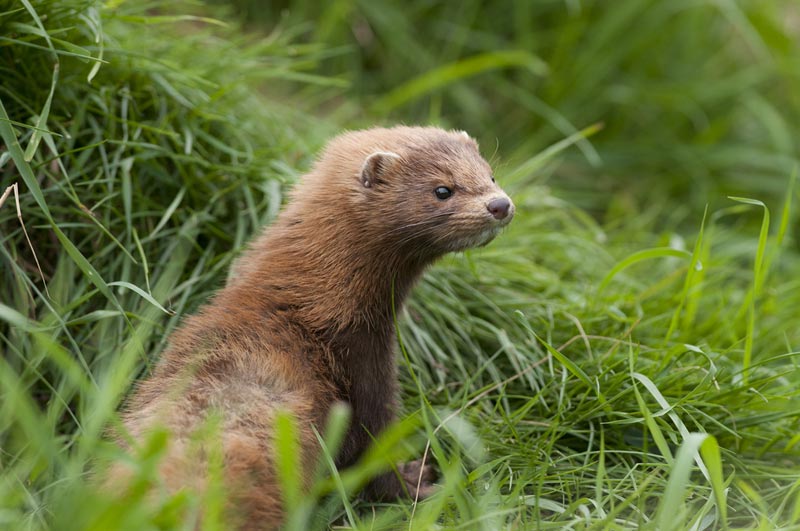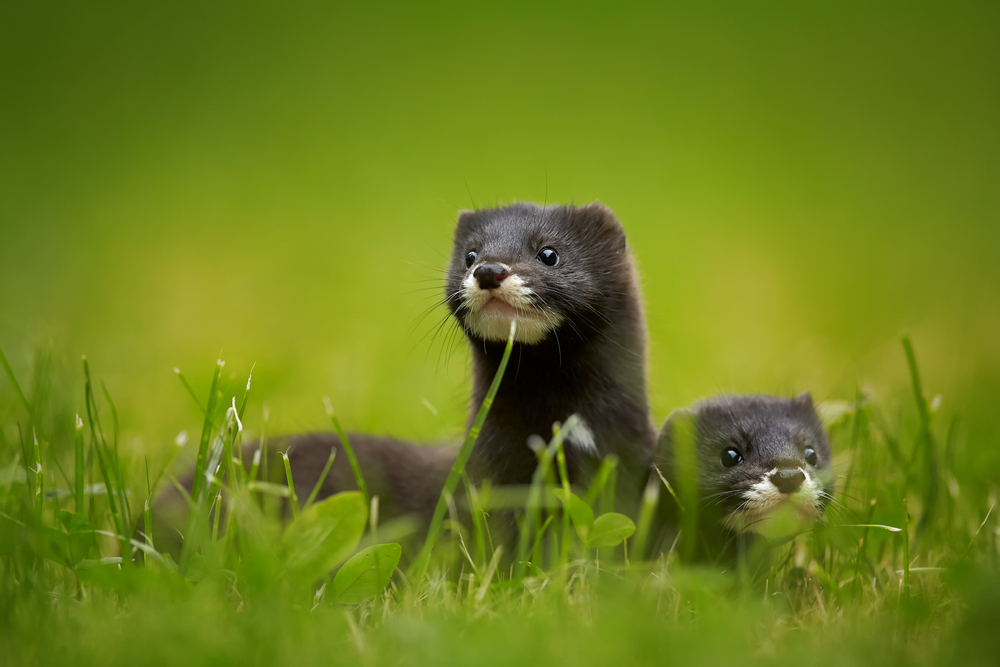Facts About Minks

Minks are small mammals with long, thin bodies, short legs, pointed snouts and claws. These soft creatures are related to ermines, ferrets and weasels and look much like their relatives. Their fur is highly valued.
There are two species of minks: European minks and American minks. They were once classified in the same genus, Mustela, but recent research has led to the American mink being classified separately in the Neovison genus, according to the International Union for Conservation of Nature (IUCN).
Size
American minks are the larger of the two species, according to the Animal Diversity Web (ADW). They weigh 25 to 56 ounces (700 to 1,600 grams) and are 18 to 27.5 inches (46 to 70 centimeters) long. European minks weigh 15.5 to 26 ounces (440 to 739 g) and are around 12 to 15 inches (31 to 38 cm).
Habitat
Minks are found near bodies of water, such as streams, lakes or ponds that have nearby tree cover. They make their homes by digging dens or by living in hollow logs. They often make their dens a little cozier by adding grass, leaves or fur leftover from prey, according to ADW.
Habits
Most minks are loners and typically only come together to breed. They are crepuscular, which means they are most active during the dawn and dusk hours, spending their time marking their territory and looking for prey. When they find a potential meal, they bite down on the creature's neck to kill it.
Diet
Minks are carnivores, which means they eat meat. Muskrats, chipmunks, mice, rabbits, fish, snakes, frogs and water fowl are all part of the mink's diet. The European mink is also known to eat some vegetation. Leftovers from a kill are often kept in the mink's den for later.
Offspring
American minks will carry their offspring for a gestation period of 40 to 75 days while European minks have a gestation period of 35 to 72 days. They will give birth to a litter of one to eight babies. These babies are called kits, according to the Oxford Dictionaries.
Kits are weaned at 6 to 10 weeks, though how long they stay with their mother depends on the species. American minks become independent at six to 10 months while European minks leave at much younger age, around two-and-a-half to four months, according to ADW. They become sexually mature at 10 to 12 months.

Classification/taxonomy
Here is the classification of minks, according to theIntegrated Taxonomic Information System (ITIS):
Kingdom: Animalia Subkingdom: Bilateria Infrakingdom: Deuterostomia Phylum: Chordata Subphylum: Vertebrata Infraphylum: Gnathostomata Superclass: Tetrapoda Class: Mammalia Subclass: Theria Infraclass: Eutheria Order: Carnivora Suborder: Caniformia Family: Mustelidae Subfamily: Mustelinae Genera: Mustela, Neovison Species:
- Mustela lutreola (European mink)
- Neovison vison (American mink)
Conservation status
While the American mink is in no danger of disappearing, the European mink is listed as critically endangered by the IUCN. Half of the population has been lost in the last 10 years, according to IUCN's Red List of Threatened Species. The population is continuing to decline and is estimated to reach an 80 percent loss in the next 10 years.
Other facts
The mink's coat is coated in oil to repel water.
Minks have webbed feet that help them swim.
Minks can swim up to 100 feet (30 m) underwater, according ADW.
The European mink is rarely found more than 328 feet (100 m) away from fresh water, according to IUCN.
The mink's fur is very valuable around the world. Because of this, there are farms that raise minks to harvest their fur.
Additional resources
Sign up for the Live Science daily newsletter now
Get the world’s most fascinating discoveries delivered straight to your inbox.











